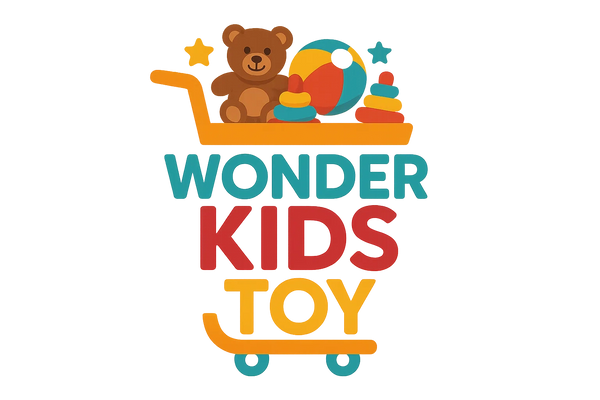-
🦁 Jungle Journey: 5-in-1 Wooden Montessori Activity Cube with Music & Lights! 🦁🎵
Regular price $163.00Regular priceUnit price per$273.00Sale price $163.00SAVE 40% -
Spectrum of Success: Acorn to Oak Rainbow Stones 72-Piece Learning Set! 🌈🪨
Regular price $204.00Regular priceUnit price per$314.00Sale price $204.00SAVE 35% -
🏺 Desert Majesty: Great Sphinx of Egypt Architecture Building Set – 2,732 Pieces! 🏺🧱
Regular price $204.00Regular priceUnit price per$314.00Sale price $204.00SAVE 35%
Sustainable building blocks for kids encourage creativity, problem-solving, and motor skills while promoting eco-friendly play through durable, safe materials designed for imaginative construction and long-lasting learning. You know that joy kids get when they stack blocks higher than their head… only to knock them all down with a big laugh? That’s play at its purest. But here’s the thing: not all blocks are created equal. Sustainable building blocks give kids the same endless fun without the waste. They’re safe, durable, and eco-friendly — so your child builds castles today and a greener future tomorrow.
At Wonder Kids Toy, we’ve curated a collection of sustainable building blocks that parents can feel good about. They’re made from responsibly sourced wood, bamboo, or recycled materials, with smooth finishes and non-toxic paints. For kids, they’re just blocks that feel great in their hands. For parents, they’re playing with a purpose.
Shop our sustainable building blocks collection today — because building a better world starts with play.
Why Parents Love Sustainable Building Blocks
Let’s be real. We’ve all seen plastic blocks break, fade, or end up in the landfill. That’s why more families are switching to eco-friendly toys.
Here’s why sustainable building blocks are such a win
Planet-friendly – Crafted from wood, bamboo, or recycled plastics.
Safe & non-toxic – Smooth edges, no harsh chemicals.
Creative freedom – Every build is unique, no batteries required.
Team play – Siblings and friends learn to build (and laugh) together.
STEM skills – Problem-solving, logic, and fine motor development are built right in.
They’re more than toys — they’re tiny lessons in creativity, patience, and responsibility.
Explore Our Sustainable Building Blocks
For Toddlers (Ages 2–4)
Chunky, colorful blocks designed for little hands.
Easy to grip, stack, and knock down again (the best part).
Non-toxic paints and safe finishes.
Teaches colors, balance, and early problem-solving.
For Preschoolers (Ages 4–6)
Eco-friendly blocks that fuel bigger imaginations.
Build towers, houses, or whatever they invent in their story.
Encourages patience and teamwork.
Smooth wooden or bamboo designs that last through endless play sessions.
For Big Kids (Ages 7+)
Sustainable sets that bring challenge and creativity together.
Wooden construction kits, magnetic eco-blocks, and complex designs.
Develops advanced STEM skills while staying screen-free.
Inspires independent projects and group builds.
What Kids Learn (Without Realizing It)
When kids play with sustainable building blocks, they’re not just “keeping busy.” They’re building skills that stick:
Critical thinking – How do I balance this piece?
Patience – Big ideas take time.
Creativity – Every build tells a new story.
Teamwork – Building together is half the fun.
Eco-awareness – Learning that play can also protect the planet.
Choosing the Right Set
Are you unsure which blocks best fit your child? Here’s a quick guide:
Toddlers → Chunky, lightweight blocks with smooth edges.
Preschoolers → Mid-sized eco-blocks with fun colors and patterns.
Older kids → Magnetic blocks, construction kits, and advanced sets.
Family fun → Choose a set big enough to share for group play.
Why Families Trust Wonder Kids Toy
We don’t just sell toys — we pick ones that parents can feel proud to bring home.
Eco-conscious materials – Every set is sourced responsibly.
Kid-safe standards – Non-toxic, BPA-free, globally tested.
Durable designs – Built for years of play, not weeks.
Parent-approved, kid-loved – Fun for kids, peace of mind for parents.
Shop Sustainable Building Blocks Online Today
From toddlers stacking their first colorful towers to older kids engineering creative builds, our sustainable building blocks collection has something for every stage of development. They’re fun, safe, and eco-friendly — the kind of toys parents can trust and kids can’t put down.
Explore our sustainable building blocks today and let your child build memories, skills, and a greener tomorrow.
FAQs – Sustainable Building Blocks
1. What makes building blocks “sustainable”?
They’re made from eco-friendly materials like bamboo, wood, or recycled plastics — safe for kids and kind to the Earth.
2. Are sustainable blocks safe for toddlers?
Absolutely. Ours are chunky, smooth-edged, and painted with non-toxic colors.
3. Do they last as long as regular plastic blocks?
Even longer. They’re built to survive endless towers, tumbles, and rebuilds.
4. Can sustainable blocks support learning?
Yes! They naturally encourage problem-solving, STEM skills, and creativity.
5. Are they good gifts?
Definitely, they’re thoughtful, eco-conscious, and always fun.




